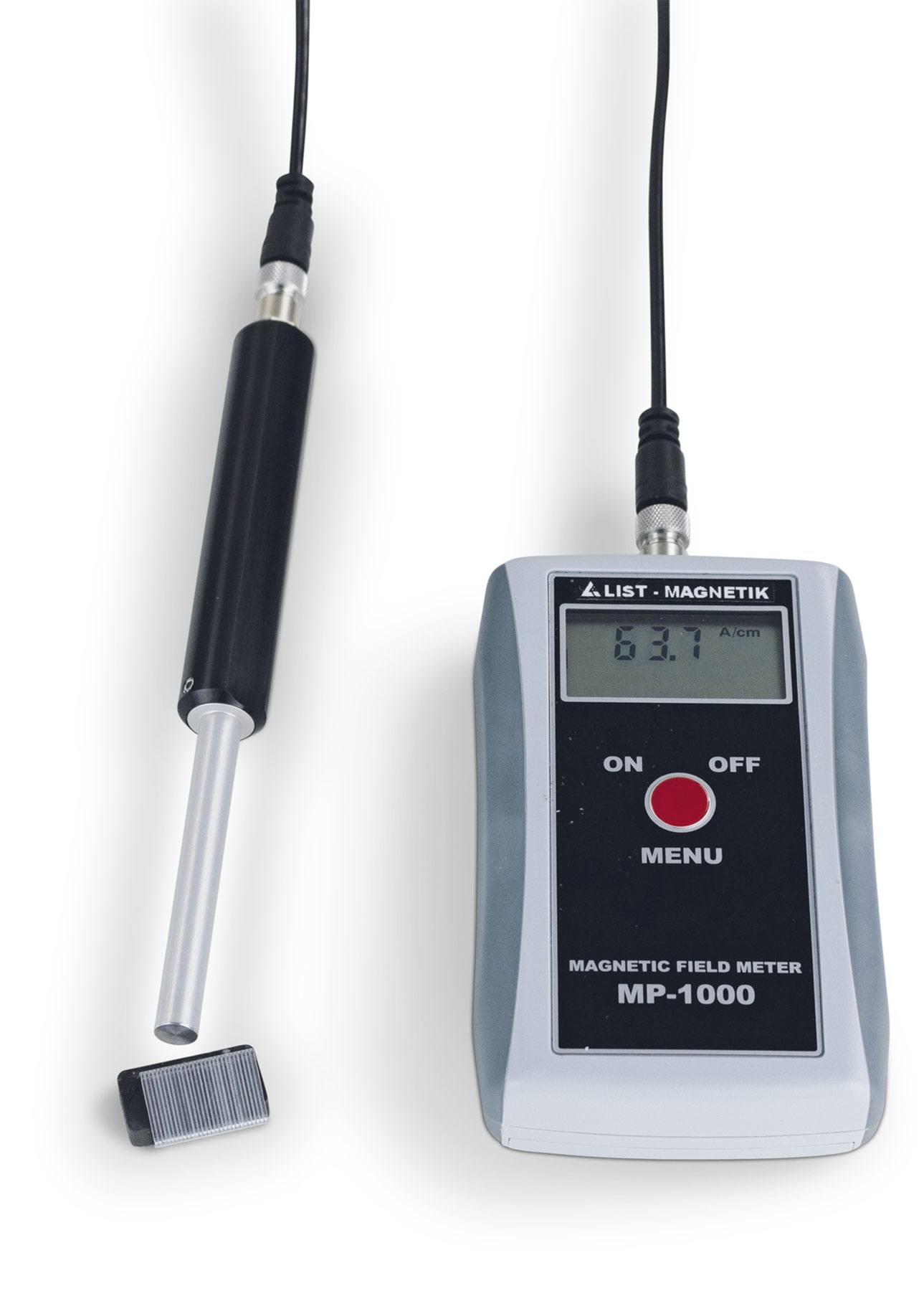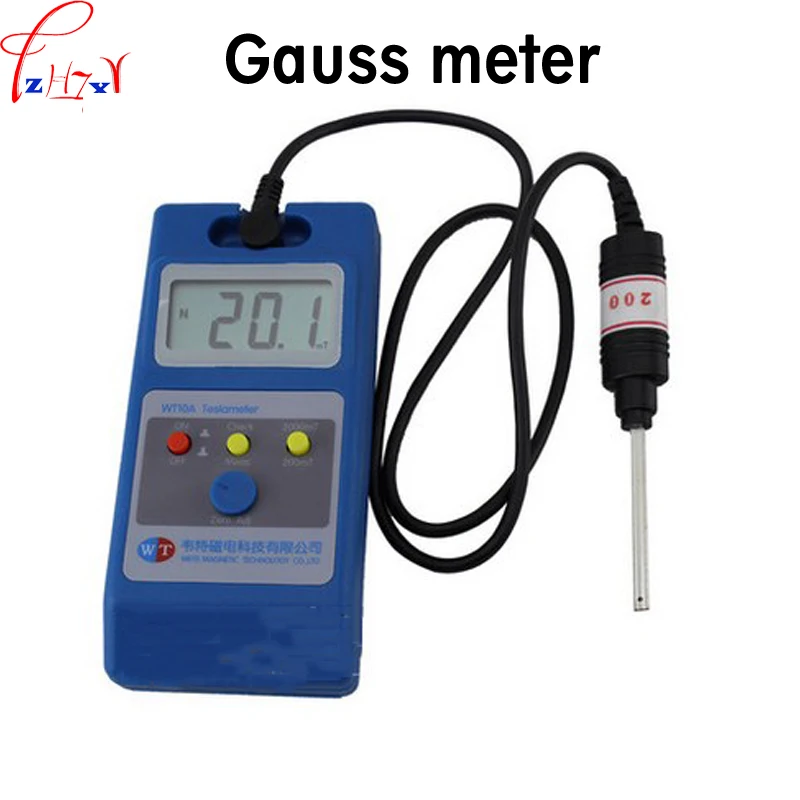Magnetic fields are everywhere—literally! From the Earth’s magnetic pull that helps us navigate, to the fields generated by your fridge magnets, they’re part of our daily lives. But what if you need to measure those fields? That’s where a magnetic Gauss meter comes in. Whether you’re troubleshooting electronic devices, working in manufacturing, or simply experimenting with magnets for fun, this handy tool can save the day.
So, what’s the big deal about a magnetic Gauss meter? Essentially, it’s a specialized device that measures the strength and direction of magnetic fields. Think of it as your magnetic field detective, ready to sniff out stray magnetic forces or confirm whether that magnet you’ve been playing with is as strong as it claims to be.

What Is a Magnetic Gauss Meter?
Understanding Magnetic Gauss Meters
At its core, a magnetic Gauss meter is a precision instrument used to measure the strength of a magnetic field. It quantifies magnetic flux density, typically in units of Gauss (G) or Tesla (T)—which are essentially different ways to express how much magnetic energy is flowing through a specific area.
The term “Gauss” honors Carl Friedrich Gauss, a German mathematician and physicist whose work in magnetism laid the foundation for these measurements. Think of him as the unsung hero of your trusty Gauss meter!
Magnetic Gauss meters are widely used across industries, including electronics, manufacturing, healthcare, and research. From testing the efficiency of MRI machines to ensuring the quality of industrial magnets, these devices are vital tools.
How Does a Gauss Meter Work?
The operation of a Gauss meter is based on the Hall effect, a fascinating phenomenon discovered by physicist Edwin Hall in 1879. When a current-carrying conductor is exposed to a magnetic field, it generates a voltage perpendicular to both the current and the field. The Gauss meter detects this voltage to determine the strength and direction of the magnetic field.
Here’s how it works step-by-step:
- The Probe: The probe contains a tiny Hall sensor that interacts with the magnetic field.
- The Circuitry: The internal circuitry translates the sensor’s data into measurable units.
- The Display: Finally, the meter’s display shows the result, usually in Gauss or Tesla.
Modern Gauss meters often come with advanced features, like digital displays, data logging, and even wireless connectivity for remote monitoring.
Types of Gauss Meters
Not all Gauss meters are created equal. Depending on your needs, you can choose from:
- Handheld Gauss Meters: Lightweight and portable, perfect for on-the-go measurements.
- Benchtop Models: Larger and more powerful, ideal for laboratory or industrial settings.
- Analog vs. Digital: Analog models are simple and reliable, while digital meters provide greater precision and advanced features.
Fun Fact: Some Gauss meters are specifically designed for niche applications, like measuring the magnetic field around superconductors or detecting electromagnetic interference in sensitive electronics.

Why Use a Magnetic Gauss Meter?
Importance of Measuring Magnetic Fields
So, why would anyone need to measure magnetic fields in the first place? Let’s put it this way: magnetic fields can be sneaky. They’re invisible, but their effects are very real, especially in industries where precision matters. Whether you’re designing sensitive electronics, troubleshooting electromagnetic interference, or simply checking the strength of a magnet, a magnetic Gauss meter is your go-to tool.
For instance, in manufacturing, maintaining consistent magnetic field strength is crucial for producing high-quality products. Imagine creating a motor with uneven magnetic forces—talk about a recipe for disaster! Similarly, in research labs, precise magnetic field measurements are often required for experiments involving superconductors or particle accelerators.
Common Problems Solved by Gauss Meters
A magnetic Gauss meter isn’t just for show; it’s a workhorse that tackles real-world challenges. Here are some of the common problems it solves:
- Troubleshooting Electromagnetic Interference (EMI):
EMI can wreak havoc on electronic devices, causing malfunctions or reduced efficiency. A Gauss meter helps pinpoint the source of interference so you can fix it. - Detecting Faulty Magnets:
In industries that rely on magnets, like manufacturing or robotics, weak or inconsistent magnets can disrupt operations. A Gauss meter ensures magnets meet the required strength and uniformity. - Ensuring Safety Around High Magnetic Fields:
Some environments, like MRI facilities or power plants, have strong magnetic fields that can pose risks. Regularly measuring these fields helps ensure worker safety. - Research and Development:
Whether testing new materials or exploring magnetic phenomena, scientists rely on Gauss meters for accurate data.
Real-Life Case Study: The Importance of Measuring Magnetic Fields
Take the case of a robotics company that was experiencing random failures in their automated assembly lines. After weeks of troubleshooting, they discovered that stray magnetic fields from nearby machinery were interfering with the robot’s sensors. By using a Gauss meter, they identified the exact source of the problem and installed shielding to resolve the issue. This small fix saved them thousands in downtime and repairs.

Components and Features of a Gauss Meter
Key Components
To effectively use a magnetic Gauss meter, it’s essential to understand its key components. While modern models come with varying bells and whistles, most Gauss meters share a similar setup. Here’s a breakdown of what makes up a Gauss meter:
- The Probe (or Sensor):
This is the business end of the Gauss meter. The probe interacts directly with the magnetic field and contains a Hall sensor to detect the field’s strength and direction. Probes may vary in shape and size depending on their intended application, from flat sensors for surface measurements to thin probes for hard-to-reach areas. - The Display Interface:
The display is where the magic happens—okay, maybe just the math. It shows you the measurement results, typically in Gauss (G) or Tesla (T). Digital meters often feature LCD or LED screens for easy reading, while analog models use a needle and scale. - The Circuitry:
Hidden within the casing, the circuitry processes the data collected by the probe and converts it into usable information. Advanced models may also include built-in processors for enhanced functionality like averaging readings or storing data. - The Power Source:
Most Gauss meters are battery-powered, making them portable and easy to use in the field. However, benchtop models may require a direct power supply for continuous operation.
Features to Look for When Buying a Gauss Meter
Not all Gauss meters are created equal, and the right choice depends on your specific needs. Here’s a checklist of features to consider:
- Measurement Range and Sensitivity:
Different applications require different ranges. For example, measuring a fridge magnet might only need a range of 0-1,000 Gauss, while industrial applications might require higher ranges. - Accuracy and Resolution:
Precision matters. Look for models with high resolution (e.g., measurements down to 0.1 Gauss) and low error margins. - Data Logging and Analysis:
Advanced Gauss meters allow you to store readings and analyze them later. This feature is particularly useful for long-term studies or quality control. - Ergonomics and Portability:
Handheld meters should feel comfortable to hold, while benchtop models should have a user-friendly layout. - Specialized Probes:
Some models come with interchangeable probes for measuring different types of fields or accessing tight spaces.
Handheld vs. Benchtop Gauss Meters
| Feature | Handheld Gauss Meter | Benchtop Gauss Meter |
|---|---|---|
| Portability | Highly portable | Stationary |
| Measurement Range | Limited | Wide range |
| Ease of Use | Simple and straightforward | Advanced functionality |
| Applications | Fieldwork, quick checks | Laboratory, industrial research |
| Cost | Affordable to mid-range | More expensive |
Pro Tip: If you’re new to using a Gauss meter, start with a basic handheld model. As you gain experience, you can explore more advanced options with extra features.

Step-by-Step Guide: How to Use a Magnetic Gauss Meter
Preparing the Gauss Meter for Use
Before you jump into measuring magnetic fields, it’s important to prep your Gauss meter properly. Think of it as stretching before a workout—you’ll get better results and avoid unnecessary errors.
Here’s how to get started:
- Check the Calibration:
Calibration is key for accurate readings. Most meters come pre-calibrated, but it’s a good idea to recalibrate periodically, especially if the meter has been stored for a while. Follow the manufacturer’s instructions for calibration, which may involve using a reference magnet. - Inspect the Probe:
Ensure the probe is clean and free of damage. A damaged probe can lead to faulty readings or no readings at all. - Power It Up:
For handheld models, check the battery levels to avoid interruptions. For benchtop models, ensure a steady power connection. - Set the Measurement Mode:
Many Gauss meters let you switch between AC (alternating current) and DC (direct current) fields. AC is ideal for fluctuating magnetic fields, while DC is for steady fields.
Measuring Magnetic Fields
Once your Gauss meter is ready, it’s time for the fun part—measuring magnetic fields! Follow these steps to ensure accurate and reliable readings:
- Position the Probe Correctly:
The orientation of the probe matters. Align it perpendicularly to the magnetic field for the strongest and most accurate reading. Some meters have indicators or markings to help with alignment. - Hold Steady:
Movement or shaking can affect your readings. Keep the probe steady and maintain consistent pressure if you’re measuring against a surface. - Take the Reading:
Observe the display. The measurement will usually appear instantly, but for fluctuating fields, it may take a moment to stabilize. - Record the Data:
If your meter doesn’t have data logging, jot down the readings manually. For multiple measurements, label each reading with its location or context for future reference.
Using a Gauss Meter in Different Scenarios
1. Testing Magnetic Materials:
Curious about how strong your fridge magnet is? Place the probe near the surface of the magnet and take a reading. This can help determine if a magnet has weakened over time.
2. Measuring Stray Fields in Industrial Settings:
Stray magnetic fields can interfere with sensitive equipment. Use your Gauss meter to scan for fields around machinery and identify areas that may need shielding.
3. Verifying Permanent Magnet Strength:
Industries that use permanent magnets, such as motor manufacturers, rely on Gauss meters to ensure consistency in magnet quality.
4. Checking for Electromagnetic Interference (EMI):
Position the probe near electronic devices to detect EMI, which can affect the performance of other equipment.
Common Mistakes to Avoid
Even the most experienced users can slip up. Here are some common pitfalls to watch out for:
- Incorrect Probe Orientation:
Misaligning the probe with the magnetic field can lead to weak or inaccurate readings. Always align it perpendicular to the field. - Skipping Calibration:
An uncalibrated meter is like a compass without a needle—useless. Make calibration a regular part of your routine. - Ignoring Environmental Factors:
External factors, like temperature and other nearby magnetic sources, can skew your readings. Work in a controlled environment whenever possible.